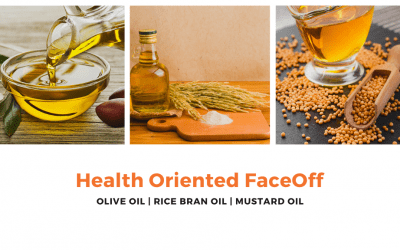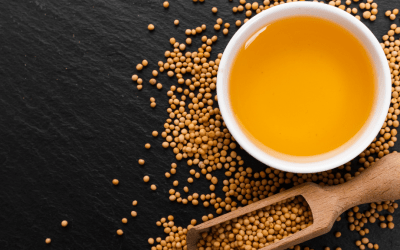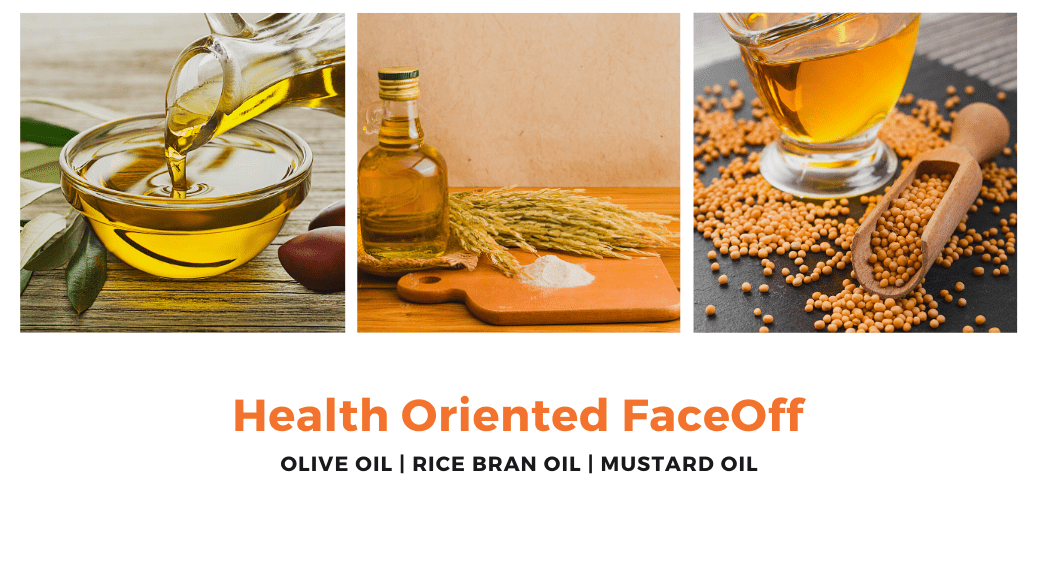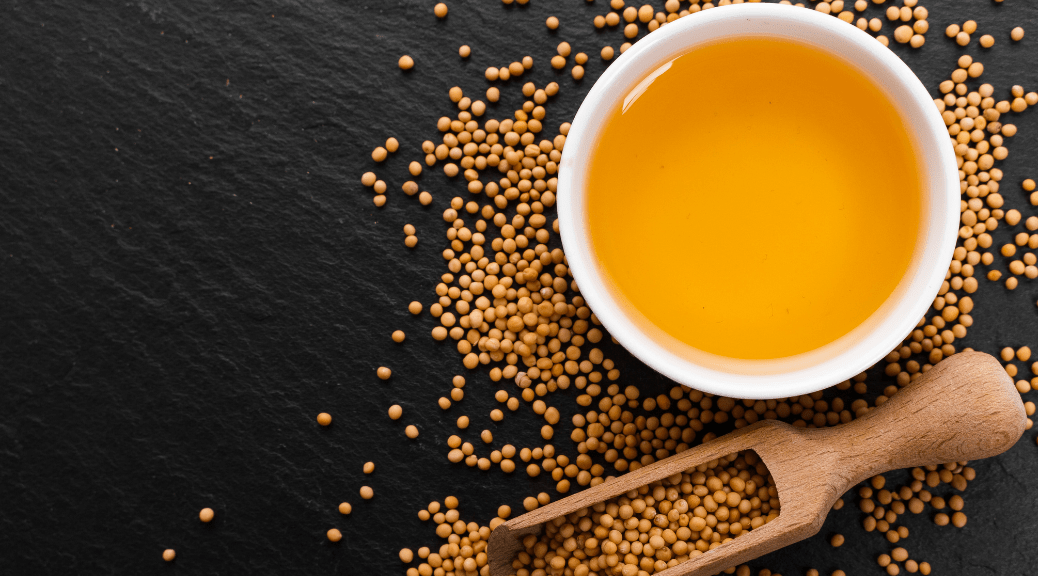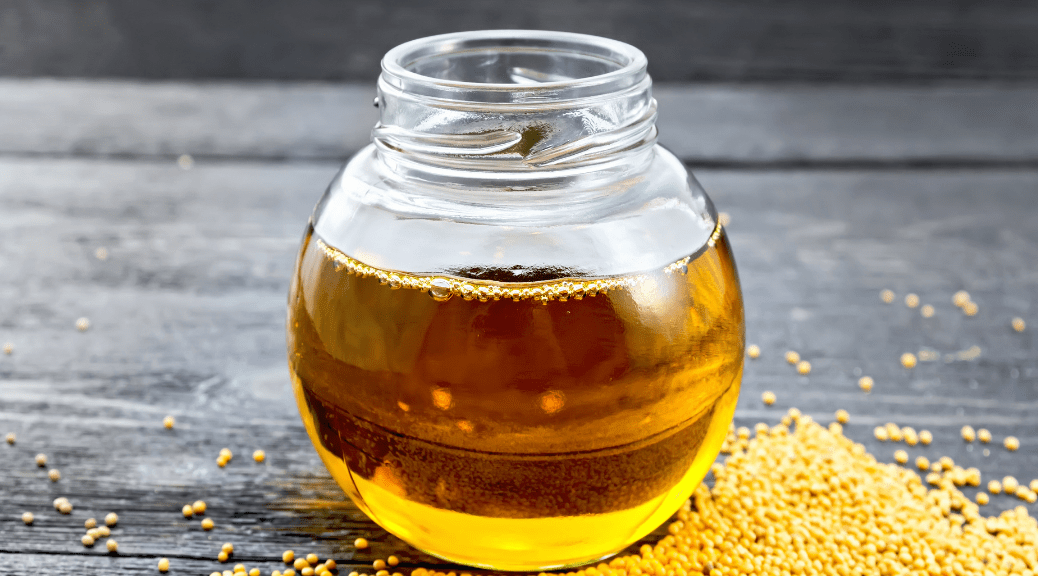Off late consumers have turned extra careful about the food and food ingredients intake. If you’re one of us, you will feel relived with this piece...

Groundnut Oils-Your search for a no cholesterol oil ends here
Groundnut Oils-Your search for a no cholesterol oil ends here
A Consumer Voice Report
How We Test
Consumer VOICE tested 12 popular brands of groundnut oils and evaluated each brand on parameters including organoleptic tests, MUFA, PUFA, iodine value, unsaponifiable matter, saponification value, refractive index, bellier turbidity temperature, peroxide value, saturated fatty acids, moisture and insoluble impurities, argemone oil, flash point, and aflatoxin among others.
The test program for groundnut oil was based on FSS regulation and Indian Standard IS: 544-2014, which covers the product requirements. The Indian Standard (IS 544: 2014) though prescribes 5 grades of the oil, yet, refined, grade 1 and 2 express type and refined solvent types are recommended for direct edible purposes.
The team purchased 12 groundnut oils samples marketed in the country and sent for laboratory testing. The testing was performed at a reputed laboratory with accreditation from the National Accreditation Board of Test Laboratories (NABL).
Brands Tested
The following table contains results of the 12 brands of refined and filtered groundnut oils. A quick glance below will help one to know the best brand in both the filtered and refined categories.
Filtered/Virgin Groundnut Oils
| Rank | Score Out of 100 (Rounded off) | Brands | Net Quantity | MRP
in Rs |
Best before, Month | Manufactured/ Marketed by |
| 1 | 88 | Gemini | 1L (910
gm) |
170 | 9 | Cargill India Pvt. Ltd., |
| 1 | 88 | Fresh &
Pure |
1L (910
gm) |
170 | 9 | Future Consumer Limited, |
| 2 | 87 | Ankur | 1L (910
gm) |
180 | 12 | Ankur Oil Industries |
| 2 | 87 | Porna | 1L (910
gm) |
175 | 6 | SKM Foods Foods (Edible Oil Division)
SKM Animal Feeds and Foods (India) Pvt. Ltd., |
| 2 | 87 | Dhara | 1L (910
gm) |
173 | 8 | Mother Dairy Fruit & Vegetable Pvt. Ltd., |
| 2 | 87 | Patan- jali | 1L (910
gm) |
155 | 9 | Patanjali Ayurved Limited., |
| 2 | 87 | Gulab | 1L (910
gm) |
145 | 12 | Gulab Oil & Foods Pvt. Ltd., |
Refined Groundnut Oils
| Rank | Total Score Out of 100 (rounded off) | Brands | Net quantity | MRP in Rs | Best before, Month | Manufactured/ Mar- keted by |
| 1 | 90 | Dalda | 1L (910 gm) | 185 | 9 | Bunge India Pvt. Ltd. |
| 2 | 89 | Nature Fresh | 1L (910 gm) | 170 | 9 | Cargill India Pvt. Ltd., |
| 2 | 89 | Gagan | 1L (910 gm) | 191 | 9 | Bunge India Pvt. Ltd., |
| 3 | 88 | Fortune | 1L (910 gm) | 160 | 9 | Adani Wilmar Ltd., |
| 3 | 88 | Postman | 1L (910 gm) | 220 | 12 | S.K. Oils., |
Key findings
◆ In the filtered category, brand Gemini and Fresh & Pure secured number 1 position.
◆ In the refined category, Dalda scored highest followed by Nature Fresh and Gagan.
◆ Brands Gemini and Fresh & Pure are value for money oils in the filtered category and Nature Fresh in the refined category.
◆ In sensory tests, brand Dalda performed on top followed by Gagan and Ankur.
◆ Aflatoxin was not detected in any brand.
◆ All brands had met the Food Safety Standard Regulations requirement and thus they are safe for consumption.
◆ All the brands were free from adulteration.
CV Recommendations
Filtered
Gemini, Fresh & Pure
Refined
Dalda
Value For Money Brands
Filtered
Gemini, Fresh & Pure
Refined
Nature Fresh
Test Results
MUFA|PUFA| Iodine Value| Organoleptic Tests | Unsaponifiable Matter| Saponification value | Refractive Index| Bellier Turbidity Temperature| Peroxide Value | Saturated Fatty Acids| Trans Fatty Acids (Trans Fat)| Moisture and Insoluble Impurities| Test for Argemone Oil| Flash Point| Aflatoxin| Net Quantity| Packaging| Marking
| Filtered/Virgin Groundnut Oil | Refined Groundnut Oil | ||||||||||||
| Brand
Parameters |
Wt. % | Gemini | Fresh &
Pure |
Ankur | Porna | Dhara | Patanjali | Gulab | Dalda | Nature
Fresh |
Gagan | Fortune | Postman |
| Organoleptic tests | 12 | 10.66 | 10.41 | 10.84 | 10.61 | 10.32 | 10.68 | 10.7 | 11.01 | 10.14 | 10.92 | 10.71 | 9.87 |
| Net Quantity | 2 | 2 | 2 | 2 | 2 | 2 | 2 | 2 | 2 | 2 | 2 | 2 | 2 |
| Presence of Mineral oil | 3 | 3 | 3 | 3 | 3 | 3 | 3 | 3 | 3 | 3 | 3 | 3 | 3 |
| Presence of Argemone oil | 3 | 3 | 3 | 3 | 3 | 3 | 3 | 3 | 3 | 3 | 3 | 3 | 3 |
| Refractive index | 6 | 5.76 | 5.52 | 5.52 | 5.04 | 5.76 | 5.52 | 4.56 | 5.52 | 5.04 | 5.28 | 5.28 | 4.08 |
| Moisture & insoluble impurities | 5 | 4.00 | 4.00 | 4.00 | 4.00 | 3.60 | 3.80 | 4.00 | 4.00 | 4.40 | 4.20 | 3.80 | 4.40 |
| Flash point | 4 | 3.92 | 2.56 | 2.80 | 2.76 | 2.56 | 2.80 | 2.72 | 3.28 | 3.08 | 2.52 | 2.48 | 2.68 |
| Saponification value | 6 | 5.22 | 4.80 | 5.16 | 5.04 | 5.70 | 5.16 | 5.82 | 5.94 | 5.52 | 5.22 | 4.98 | 5.58 |
| Iodine value (Wij’s) | 6 | 4.75 | 5.71 | 5.21 | 4.78 | 5.42 | 4.94 | 4.68 | 4.92 | 5.47 | 4.58 | 5.11 | 5.71 |
| Unsaponifiable matter | 6 | 4.80 | 5.28 | 5.04 | 5.76 | 5.04 | 5.28 | 5.04 | 5.76 | 5.76 | 5.76 | 5.76 | 5.76 |
| Bellier turbidity temperature | 5 | 3.50 | 4.85 | 3.50 | 3.50 | 4.10 | 3.50 | 3.50 | 3.65 | 4.40 | 3.50 | 3.95 | 4.55 |
| Aflatoxin | 4 | 4 | 4 | 4 | 4 | 4 | 4 | 4 | 4 | 4 | 4 | 4 | 4 |
| Acid value | 5 | 4.50 | 3.90 | 3.70 | 4.20 | 3.80 | 4.00 | 3.80 | 4.50 | 4.50 | 5.0 | 4.50 | 4.50 |
| Peroxide value | 5 | 4.42 | 4.51 | 4.85 | 4.45 | 4.19 | 4.42 | 4.79 | 4.80 | 3.26 | 4.68 | 4.80 | 3.42 |
| Saturated fatty acids | 5 | 3.96 | 3.86 | 3.98 | 4.08 | 3.86 | 4.02 | 4.26 | 3.64 | 4.06 | 3.98 | 3.78 | 4.20 |
| Monounsaturated fatty acids | 7 | 5.80 | 5.47 | 6.02 | 6.33 | 5.68 | 6.13 | 6.60 | 5.38 | 5.64 | 5.87 | 5.42 | 5.24 |
| Polyunsaturated fatty acids | 7 | 6.08 | 6.33 | 5.87 | 5.61 | 6.08 | 5.78 | 5.49 | 6.27 | 6.31 | 6.02 | 6.33 | 6.80 |
| Trans fatty acids | 3 | 3 | 3 | 3 | 3 | 3 | 3 | 3 | 3 | 3 | 3 | 3 | 3 |
COMPARATIVE PERFORMANCE SCORE
| Filtered/Virgin Groundnut Oil | Refined Groundnut Oil | ||||||||||||
| Brand
Parameters |
Wt. % | Gemini | Fresh &
Pure |
Ankur | Porna | Dhara | Patanjali | Gulab | Dalda | Nature
Fresh |
Gagan | Fortune | Postman |
| Organoleptic tests | 12 | 10.66 | 10.41 | 10.84 | 10.61 | 10.32 | 10.68 | 10.7 | 11.01 | 10.14 | 10.92 | 10.71 | 9.87 |
| Net Quantity | 2 | 2 | 2 | 2 | 2 | 2 | 2 | 2 | 2 | 2 | 2 | 2 | 2 |
| Presence of Mineral oil | 3 | 3 | 3 | 3 | 3 | 3 | 3 | 3 | 3 | 3 | 3 | 3 | 3 |
| Presence of Argemone oil | 3 | 3 | 3 | 3 | 3 | 3 | 3 | 3 | 3 | 3 | 3 | 3 | 3 |
| Refractive index | 6 | 5.76 | 5.52 | 5.52 | 5.04 | 5.76 | 5.52 | 4.56 | 5.52 | 5.04 | 5.28 | 5.28 | 4.08 |
| Moisture & insoluble impurities | 5 | 4.00 | 4.00 | 4.00 | 4.00 | 3.60 | 3.80 | 4.00 | 4.00 | 4.40 | 4.20 | 3.80 | 4.40 |
| Flash point | 4 | 3.92 | 2.56 | 2.80 | 2.76 | 2.56 | 2.80 | 2.72 | 3.28 | 3.08 | 2.52 | 2.48 | 2.68 |
| Saponification value | 6 | 5.22 | 4.80 | 5.16 | 5.04 | 5.70 | 5.16 | 5.82 | 5.94 | 5.52 | 5.22 | 4.98 | 5.58 |
| Iodine value (Wij’s) | 6 | 4.75 | 5.71 | 5.21 | 4.78 | 5.42 | 4.94 | 4.68 | 4.92 | 5.47 | 4.58 | 5.11 | 5.71 |
| Unsaponifiable matter | 6 | 4.80 | 5.28 | 5.04 | 5.76 | 5.04 | 5.28 | 5.04 | 5.76 | 5.76 | 5.76 | 5.76 | 5.76 |
| Bellier turbidity temperature | 5 | 3.50 | 4.85 | 3.50 | 3.50 | 4.10 | 3.50 | 3.50 | 3.65 | 4.40 | 3.50 | 3.95 | 4.55 |
| Aflatoxin | 4 | 4 | 4 | 4 | 4 | 4 | 4 | 4 | 4 | 4 | 4 | 4 | 4 |
| Acid value | 5 | 4.50 | 3.90 | 3.70 | 4.20 | 3.80 | 4.00 | 3.80 | 4.50 | 4.50 | 5.0 | 4.50 | 4.50 |
| Peroxide value | 5 | 4.42 | 4.51 | 4.85 | 4.45 | 4.19 | 4.42 | 4.79 | 4.80 | 3.26 | 4.68 | 4.80 | 3.42 |
| Saturated fatty acids | 5 | 3.96 | 3.86 | 3.98 | 4.08 | 3.86 | 4.02 | 4.26 | 3.64 | 4.06 | 3.98 | 3.78 | 4.20 |
| Monounsaturated fatty acids | 7 | 5.80 | 5.47 | 6.02 | 6.33 | 5.68 | 6.13 | 6.60 | 5.38 | 5.64 | 5.87 | 5.42 | 5.24 |
| Polyunsaturated fatty acids | 7 | 6.08 | 6.33 | 5.87 | 5.61 | 6.08 | 5.78 | 5.49 | 6.27 | 6.31 | 6.02 | 6.33 | 6.80 |
| Trans fatty acids | 3 | 3 | 3 | 3 | 3 | 3 | 3 | 3 | 3 | 3 | 3 | 3 | 3 |
TEST PARAMETERS
Organoleptic Tests
This is a very important parameter where subjective panel tests were conducted based on their critical examination and opinion. These tests were conducted in the lab involving panel members under the supervision of trained experts. Panelists judged the groundnut oil brands on the criteria/attributes including colour and appearance, flavour/odour, visual defects, taste, and overall acceptance. Among the brands tested, Dalda was liked most followed by Gagan and Ankur.
Monounsaturated Fatty Acids (MUFA)
Monounsaturated fatty acids (MUFAs) are a healthy type of fat. MUFA as per the dietary recommendation help in biochemical processes associated with nerves, brains, heart, digestion, and cell maintenance. MUFAs lower the level of bad cholesterol (LDL) in the blood and raise the good cholesterol (HDL). MUFA results are given below:
| S.No | Brand | Results, % |
| 1. | Ankur | 58.0 |
| 2. | Dalda | 53.4 |
| 3. | Dhara | 55.9 |
| 4. | Fortune | 53.7 |
| 5. | Fresh & Pure | 54.1 |
| 6. | Gagan | 56.9 |
| 7. | Gemini | 56.4 |
| 8. | Gulab | 62.2 |
| 9. | Nature Fresh | 55.3 |
| 10 | Patanjali | 58.8 |
| 11. | Porna | 60.2 |
Polyunsaturated Fatty Acids (PUFA)
Polyunsaturated fats can help reduce bad cholesterol levels in the blood which can lower the risk of heart disease and stroke. Highest PUFA was found in Postman and it was lowest in Gulab.
Iodine Value
The iodine value is a quality test for edible oils which is a measure of the unsaturation of fats and oils and is expressed in terms of the number of centigrams of iodine absorbed per gram of sample. The iodine value of groundnut oil should be between 85 – 99. All the brands found within the required limit. However, Fresh & Pure and Postman scored highest in this parameter and Gagan scored the lowest.
Saponification Value
Saponification value helps to detect the presence of other oils/fats. The saponification value of groundnut oil should be between 188 – 196. All brands were found within the specified limit. However, Dalda scored highest in this parameter.
Unsaponifiable Matter
Unsaponifiable matter includes those substances frequently found dissolved in fatty acids and drying oils which cannot be saponified by caustic treatment, but which are soluble in the normal fat solvents. The unsaponifiable matter should not be more than 1.0 per cent in groundnut oil. All the brands were found within the specified limit.
Refractive Index
The refractive index of oil can be used to detect rancidity in edible oil. It should be between 1.4620-1.4640. All the brands were found within the specified limits. However, brands including Gemini and Dhara scored highest in this parameter.
Bellier Turbidity Temperature (BTT)
BTT test is useful to check the purity of groundnut oil. It should be in the range of 39°C to 41°C. All brands were found within specified limit and Fresh & Pure scored highest in this parameter.
Acid Value
As per the FSS Regulation, acid value should not be more than 6.0 and it should be 0.5 for the refined grade. All brands were passed this test. Filtered oils were found having the acid value higher than refined oils but all brands met the standard requirement.
Peroxide Value
The peroxide value is defined as the amount of peroxide oxygen per 1 kilogram of fat or oil. Peroxide value is the most commonly used assay for measuring the state of oxidation in fats and oils and its value measures the oxidative rancidity or degree of oxidation of the fat/oil, but not its stability. The maximum level of peroxide value should be at 10 meq/kg for refined oil and 15 meq/ kg for filtered groundnut oil. All the brands passed this test. However, brands such as Ankur, Dalda and Fortune scored highest in this parameter.
Saturated Fatty Acids
Eating foods that contain saturated fats raises cholesterol level in your blood. Saturated fats raise HDL cholesterol and change LDL from small, dense (bad) to large LDL, which is mostly benign. Saturated fat was highest in Dalda and lowest in Gulab brand.
Trans Fatty Acids (Trans Fat)
Just like saturated fats, they also raise the level of ‘bad’ cholesterol in our blood. Trans fat was not detected in any brand.
Moisture and Insoluble Impurities
Moisture and insoluble impurities may present in edible oils. The amount of water should be as low as possible. Its permissible limit is 0.1 per cent for refined oils. All the brands were found within the permissible limit of 0.1 per cent. However, Nature Fresh and Postman scored highest in this parameter.
Presence of Mineral Oil
Mineral oil is colorless, odorless, light mixtures of higher alkanes. Mineral oil should not there in groundnut oil. Adulteration of vegetable oil is usually by using mineral oils or any other cheaper oil. All the brands were found free from mineral oil.
Test for Argemone Oil
Argemone oil is very toxic and may cause eye disease leading to blindness. Regular consumption of it may also cause disease called epidemic dropsy, resembling wet beriberi. Argemone oil should be absent in groundnut oil. In our test report, Argemone oil was found absent in all the brands tested.
Flash Point
The flash point of a volatile material is the lowest temperature at which it can vaporize to form an ignitable mixture in air. At the flash point, the vapor may cease to burn when the source of ignition is removed. It should not be less than 250 oC for refined groundnut oils. Higher the flash point of groundnut oils, the lower is the risk of ignition in the oils. Gemini scored highest in this parameter and other brands of groundnut oil were found with a good flash point.
Aflatoxin
A kind of toxin or poison produced by the mold Aspergillus flavus. When animals or humans consume these compounds, they may produce severe undesirable health effects. Agmark is more stringent, requiring an absence of this carcinogen. Aflatoxin generally develops due to poor oil seed storage conditions and presence of undesirable moisture present in the oil seed that enable Aflatoxin to develop in the stored oil seeds. It should not be 10 µg/kg maximum as per FSSR. All brands passed the FSS Regulation limit for Aflatoxin.
PHYSICOCHEMICAL TESTS
Net Quantity
According to legal metrology (packaged commodity) rules for 1000-10000 ml tolerance allowed is 1.5 per cent. All the brands were found above the claimed quantity.
Packaging
Packing of the groundnut oil should be of food- grade packing material that should not affect the properties of oil as well as also maintains the shelf life of the product as far as possible. Brands Fortune, Fresh & Pure, and Gemini oils were packed in a poly pack. Dhara was packed in Tetra Packing. The rest of the brands were packed in a 1 ltr plastic bottle.
Marking
These details should be clearly and indelibly marked on the pack including name of the material, type or grade, manufacturer’s name, and trademark, batch/code number, month and year of manufacture, best before, net quantity, green dot, MRP and customer care details. All the brands had the desired label information and most of the brands had mentioned nutritional values of the groundnut oil on their packaging.
Conclusion
We collected 12 popular brands of refined and filtered groundnut oils from the retail market and tested in a NABL accredited laboratory following the national standard (Food Safety and Standard Regulations). All brands had met the national standards, Food Safety Standard Regulations requirements and thus safe for consumption. Brands Gemini and Fresh &Pure secured number 1 position in the filtered category. In refined category, Dalda secured number 1 position. We found all the brands were free from the adulteration of other oils.
DID YOU KNOW?
Refined Vs Filtered(Kachi Ghani): Refined oil is a product obtained after treating natural oils with various chemicals which can cause various diseases such as cancer, diabetes, heart and kidney ailments, among others. However, “oil extracted through “Filtered/Virgin” process is unrefined oil. The filtered oils are better than refined ones. Also, filtered oils are produced at a lower temperature which retains most of the nutrition. Yes, filtered oils do have a strong aroma which makes them unwanted for deep frying as they can overpower the taste of food. So we would advise that it’s better to consume filtered oils regularly as they are healthier and refined oils to be consumed for certain types of cooking methods.
TIPS TO CONSUMERS
All brands had mentioned about its shelf life of 6-12 months. The consumers must keep this in mind while buying groundnut oil (particularly large pack of above 5-liter capacity), must ensure that the shelf life is adequate that would remain stable within the consumption period for which large pack is purchased.
MUFA, PUFA, Saturated Fats and Trans fat
| Monounsaturated | Polyunsaturated | Saturated | Trans |
| Good Fat | Good Fat | Bad Fat | Bad Fat |
| Reduces bad cholesterol | Reduces bad | Increases overall cholesterol | Increases the bad |
| (LDL) levels and | cholesterol (LDL) | levels, especially bad | cholesterol (LDL) level |
| increases good | levels | cholesterol | and decreases good |
| cholesterol (HDL) levels | cholesterol (HDL) levels | ||
| Found in nuts and seeds, avocados, olive oil, and canola oil | Found in fatty fish such as salmon, mackerel, trout and sardines,
and also in corn, safflower, sunflower and soybean oils |
Found in animal-based foods such as meat, poultry and eggs, and also in butter, cream, and other dairy products
Also found in plant-based products such as coconut, coconut oil, palm oil and palm kernel oil, and cocoa butter |
Found in hydrogenated fat products such
as margarine and vegetable shortenings Used in packaged snack foods such as cookies, crackers, and chips, and fried foods |
How to Best Match Your Oils to Foods
The only way to ensure that you consume healthy oil is by switching between two-three of them – for instance, by using groundnut oil one month and then using sunflower oil/mustard oil in another. Any single oil alone is not preferred.
Blending oils is another option, whereby you take equal proportions of different oils in one container and then use it. This way you do not get prolonged exposure to the side effects of one type of oil and also get the benefits of different oils.
You could also have two or more different kinds of oils in your kitchen which you could use for different purposes. For example, you could use olive oil for salads, groundnut/rice bran oil for frying, and mustard/soybean/sunflower oil for other cooking purposes. This will let you avail of the health benefits offered by each oil brand.
Groundnut Oils-Your search for a no cholesterol oil ends here
The Health-Oriented Faceoff : Mustard Oil vs. Rice Bran Oil vs. Olive Oil
Health fads have become an inseparable part of people’s lives today. People are always looking for something that will help improve their health...
How to Increase the Shelf Life of Mustard Oil?
Mustard Oil is one of the common Indian kitchen ingredients that cannot be replaced. Its unique and pungent flavor, and its ability to make foods...


